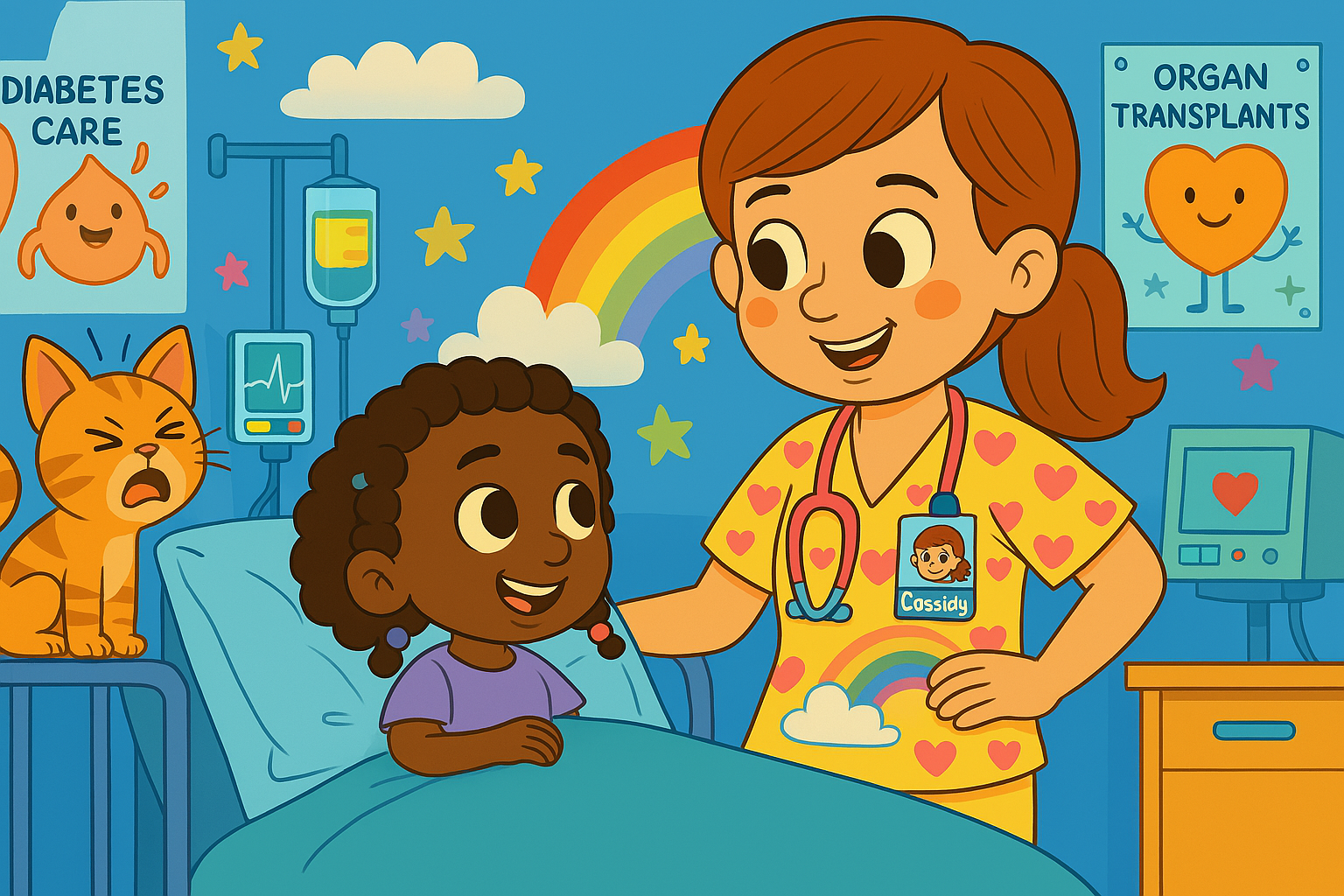#358 Defining Diabetes: Compression Low and Interstitial Fluid
Scott and Jenny Smith define diabetes terms
Defining Diabetes: Feeding Insulin. Scott and Jenny Smith, CDE define the terms that are at the center of your type 1 diabetes care.
You can always listen to the Juicebox Podcast here but the cool kids use: Apple Podcasts/iOS - Pandora - Spotify - Amazon Alexa - Google Podcasts - iHeart Radio - Radio Public or their favorite podcast app.
Check out the Diabetes Pro Tip episodes and Juicebox Docs
+ Click for EPISODE TRANSCRIPT
DISCLAIMER: This text is the output of AI based transcribing from an audio recording. Although the transcription is largely accurate, in some cases it is incomplete or inaccurate due to inaudible passages or transcription errors and should not be treated as an authoritative record. Nothing that you read here constitutes advice medical or otherwise. Always consult with a healthcare professional before making changes to a healthcare plan.
Scott Benner 0:00
This episode of defining diabetes is brought to you by Omni pod, the tubeless insulin pump, and dexcom, makers of the dexcom g six continuous glucose monitor. Find out more at my Omni pod.com Ford slash juice box and dexcom.com Ford slash juice box on the pod we'll even send you a free no obligation demo. In this episode of defining diabetes, Jenny Smith and I will be defining compression low and interstitial fluid. Now you know Jenny, she's in all the pro tip episodes and defining diabetes and ask Scott and Jenny. She's also a person who's been living with Type One Diabetes for over 30 years. Jenny holds a bachelor's degree in human nutrition and biology from the University of Wisconsin. She is a registered and licensed dietitian, a certified diabetes educator and a certified trainer on most makes and models of insulin pumps, and continuous glucose monitoring systems. Jenny services are for hire, check her out at integrated diabetes.com.
We're gonna get started in just a moment. But before we do, please remember that nothing you hear on the Juicebox Podcast should be considered advice medical more. Otherwise, please always consult a physician before making any changes to your health care plan. or becoming bold with insulin.
Do you have an absolutely spectacular endocrinologist certified diabetes educator diabetes, nutritionist you know anybody who's helping you with type one? You have one like that, that you'd love to share with other people? Or are you looking for one that fits that description? Check out juicebox docs.com. If you do JUEBOXD OCS, it's a place where I'm collecting an amazing list of fantastic support for people with type one diabetes, it's absolutely free. If you have somebody great to add, check it out. If you're looking for somebody, check it out.
So this one is Dexcom specific, although you might tell me it's more than Dexcom specific. Okay. Compression low. So if you use a if you use a Dexcom, for sure. And does it work that way for other devices, too?
Jennifer Smith, CDE 2:50
Oh, for like libri. And for Medtronic, yes. Okay. I mean, essentially, because they're all reading the same interstitial glucose from the fluid. So really, when you compress that site, regardless of the sensor brand, what it is right, you get the same impact of the same issue.
Scott Benner 3:11
Okay, so here's, here it is, if you're wearing a glucose monitor, and your blood sugar is just cruising along super stable, and then all the sudden it drops so drastically that it seems abnormal, and you panic. And you're like, Oh, I'm dying.
Jennifer Smith, CDE 3:30
I feel like it looks like a cliff die. That's how I kind of describe it to people. Like you're sitting on the edge of this beautiful cliff. And all of a sudden, like, like right over the edge it going. You're like,
Scott Benner 3:41
supposed to do that. And I Can you see them? I can see them now. Oh, yeah. Yeah, like you look at the graph, you're like, Oh, she's not really low. But But here's what could happen. You could have a glucose monitor early on, see that low, eat a bunch of food, and then 10 minutes later be significantly higher and think I don't understand what happened. I was I've been 110. Then suddenly, I was 55. And I took in enough cars. Why am I 200? All the sudden, right? So here's what happens. A continuous glucose monitor is reading interstitial fluid. And I have to say, we do this all the time. And I'm not a fan of it. Really. I say that. Like I say that, like I know what the hell I'm talking about. Okay, but interstitial fluid. I'm gonna tell Jenny like, what is it? Exactly, because I say it because I know what the function is in my life with diabetes, but I couldn't define those words. I don't believe.
Jennifer Smith, CDE 4:40
Yeah, I mean, in layman's terms, essentially, interstitial fluid is just the fluid between all those cells and everything within the body. So you know, you've got glucose in the bloodstream, and then glucose moves out of the bloodstream in through your interstitial fluid. into the cells in order to be utilized, right. So it's like this pass through effect, which is often the reason then outside of even, of compression mo issue. It's also the reason that there's lag that's visible in all the CGM systems because glucose, blood glucose is your first like real time right now value, right? And anytime that glucose is moving out and into your interstitial fluid, to see glucose levels change there, they have to first come out of the bloodstream, if that makes sense, right. So there's a lag time essentially. And a big part of the leg is often when glucose levels are changing very rapidly in the bloodstream, or around food or quick activity or whatnot. But even so then with compression low, there's still time that it takes for that change in glucose to happen from blood glucose to interstitial fluid glucose. So compression lows are very visible, like you said, you can you can almost 100% kick them out, because that you're coasting along quite nice. And all of a sudden, it just falls down. Yeah, that's not how fast blood sugar changes,
Scott Benner 6:25
it could fall that fast. If an hour earlier, you gave yourself a big bolus and forgot to eat and then there would be a moment in that drop where you were falling like that, but you don't just go from stable to like, floor falls out from under you. That's, that would be uncommon. So this, so this episode just turned into defining diabetes, interstitial fluid, and compression. Lo I just decided, as we were talking, I'm looking online. And you know, obviously, what you said is 100% is what I'm seeing here. interstitial fluid is a thin layer of fluid which surrounds the body cells. interstitial fluid becomes useful has become useful recently in the monitoring of glucose levels with people with diabetes. And let me thank diabetes.co.uk for having great see SEO and popping up in my Google search. So interstitial fluid, as Jenny's described is carrying glucose that your your glucose monitor is monitoring,
measuring, right, thank you,
when you roll over, or sit down, or push really hard on your sensor, and by the way, I'm wearing one right now. So I'm pushing very hard on mine, right now I get to wear one for 10 days for the very first time in my life. And you do that that compression of the sensor into your body is dispersing the interstitial fluid away from the sensor wire. So your blood sugar, interestingly enough, right around the wire is being read accurately as 50, all of a sudden, because you've pushed most of the glucose away from the wire that's doing the measurement. But your body, your glucose in your body hasn't changed. It's just literally changed around where you're pushing on it. That's a compression low a low that shows up because you're laying on pushing on sitting on whatever, your sensor, and what the first number of times it happens to you. I can speak. You know, from my experience with Arden, it'll flip you out, then, but then, like Jenny said earlier, the first thing you can do is look at that graph. And eventually, you'll see what that curve looks like for a compression low. And then it takes How long do you think how many cycles of the CGM before it starts figuring things out again, and the food comes back?
Jennifer Smith, CDE 8:44
You know, I think that's, there's probably a variance, but it's also a very quick turnaround. In fact, I was gonna mention to from the data point, visual, you know, each little.is supposed to represent like a five minute interval, right? Well, when that glucose has fallen off the cliff or nosedived, there's, there are less dots, it becomes less accurate with the number of dots and the like the fluidity of the dots and the movement. So you'll also see as soon as the compression low writes itself, either you move in your own sleep, or mom or dad wake you up because they got the alert and they wake you up and have you roll over whatever. It typically writes itself. Fast after that, and all of a sudden, you'll see almost like, you know, a rocket ship has shot the blood sugar back up to kind of where it had found a look on the graph. Yeah, it's how it'll look on the graph. And you'll also see those dots become a lot more stable and normal. I got a long it takes I think it depends on how soon the compression lowers address, right. You know, for an adult on their own. Maybe they didn't even hear the alert or maybe it took a while for them to hear the alert. And so it takes them a while to move enough. And so then that low might look longer than a typical up down.
Scott Benner 10:15
I find myself wondering sometimes does Arden's phone beep and just that beeping stirs are sleeping off that she turns over, because there's times I'm not woken by it, but in the morning, you'll come and go, What happened here? You know, where it's like steady, steady, steady, 50. back up to the where it was steady, steady, steady, and nobody woke up. But there are also other times where if she's, if she's, I guess sleeping harder and doesn't roll off of it. I have to make my way across the house. And I the words aren't in rollover, you're laying on your sensor have come out of my mouth a number of times in my life. Yes, Arden rollover, you're laying on your sensor, just enough to I'm trying to put it indoors subconscious or, you know, whatever it is when you're saying, like, please stay on this side or something. But isn't it interesting? Arden Where's her sensor? In the same basic two areas, she's on her hip, left to right, left to right. And because you get 10 days in between, we just bounce back and forth. It doesn't you know what I mean?
Jennifer Smith, CDE 11:11
And the likelihood that you're going to hit exactly the same place right on that side after 10 days of not being I mean, it's like a million to one we don't live
Scott Benner 11:21
it around still a little bit. But my point was, is that with like compression was don't happen to us very often, because we have good spots. But if you move it more towards your hip bone or something like that, I guess it just changes how you sleep on iOS, sometimes I just wonder, does she sleep differently? Sometimes and not others, but it's got to be more about the the positioning of the of the sensor. So that's why like stomach sleepers, if you wear it on your stomach, you might you might be getting that, you know, side sleepers on your hips, like there's ways around it. But it's one of those things that you just hear people talk all the time, like, Oh, that's a compression low and people who no say it, like, that's just a compression low, right to the person who didn't know, they were like, I thought I was dying, just so you know. So in the beginning, and probably we should say you should still test them. But like, if you see a 50, you do a finger stick and you're 108 that's what's going on. And don't calibrate your meter or your your glucose monitor. And they're like, if you're keep that in mind if you're 100 Nate, and suddenly it says 50 do not calibrate it. Because it really, really, it really believes it's 50 because it's reading that dispersed fluid and you will mess it up in that situation. So, you know, test when you're not sure. But I think it's fair to say that after a number of years with diabetes, you'll you'll know the difference. And by the way, if it's not a compression low, it won't take long for you to figure it out. Right, you know, because you'll keep dropping most likely. Right, Jennifer? We're just too good at this to be perfect. I think we could probably do this while riding on a bus. reading a newspaper like we could be sure we those two dolls in the Muppets we could be up in the rafters like making fun of the people on stage and at the same time telling people what a protein rises.
Jennifer Smith, CDE 13:11
That would actually be really humorous like skit to do.
Scott Benner 13:16
Wow, these people have found a way to make diabetes even more exciting than it is now. Friends, it's time to get yourself a free, no obligation demo of the Omni pod sent over to the house. Okay, let's talk about the Omni pod tubeless insulin pump, besides being absolutely spectacular, is the insulin pump that my daughter who is about to turn 16 has been wearing every day since she was four years old. That's a long time. Every day on the pod comes through exactly the way we expect it to. And in a myriad of ways, by being unobtrusive by being tubeless by helping us with extended boluses Temp Basal rates. And just being what's the word I want really just it's there, it's solid. You don't mean like it does. It does what I think it's going to do when it's going to do it, I get what I expect. And what I expect is a quality insulin pump. That gives me the delivery and the wearability for my daughter that we need. And that means that she can stay attached to her insulin, when she's playing sports without being obtrusive, while she's taking a shower, sleeping, running around in the backyard jumping on the trampoline, riding a bike, swimming, all of the things that your body still needs insulin for. You know when you hear people saying oh, I disconnect for that? Well, they don't have insulin during that time, and that's very likely gonna cause a high blood sugar. Now I understand that tube pumps need to be done. Connected sometimes. But the Omni pod never needs to be disconnected. It's tubeless. Wonderful. And you don't have to take my word for it. Because on the pod will be thrilled, happy, elated, delighted to send you a free, no obligation demo that you can try on yourself. Find out if what I just said is true. But you notice, but still try my on the pod.com forward slash juice box. Check it out, get the demo, decide what you want to do. If you want to keep going with Omni pod, it'll be easy. And if you don't, no harm, no foul. You were just trying. That's why they call it no obligation. Now I have an obligation to tell you about the dexcom g six continuous glucose monitor. This obligation is both business oriented because their advertisers and moral because I think everyone should know about the Dexcom g six continuous glucose monitor. Here's why. I'm gonna use an example from this morning. Arden wakes up her blood sugar is 106 I see it on her Dexcom nice and steady. I hear her moving around upstairs. No big deal. She's getting her facewash getting dressed, getting ready to actually go out right now. All of a sudden or blood sugar diagonal up starts moving up. 106 turns into 115 turns into 118 all of a sudden 125 Well,
we bolus right we're trying to stop that rise before it happens. Arden is trying to go out she's trying to do things she needs to eat. She doesn't need to walk into this day. 5060 7080 points higher than she needs to. But imagine had she woken up and tested her blood sugar with a meter boom, she would have saw 106 and thought, Hey, I'm doing great. And then she never would have seen anything that happened next. And then a half an hour 40 minutes later when she's sitting down to eat and tests again. You know in a world without a CGM. Who knows what she is to 25 now suddenly, the first meal is in jeopardy. It puts the rest of the day in question. You're looking at roller coaster going up and down and up and down are skipping a meal. Instead, beep beep Arden's blood sugar hits 120 she gets a little insulin right back to where we need to be ready for that meal ready for the day. That uniquely happened because Arden has a dexcom g six continuous glucose monitor. Now that's just one example. Imagine all of the other ways that technology can be used for you. Imagine that the way I found out about it wasn't because I was bugging Arden while she was getting dressed. It's because it popped up on my iPhone. Because the dexcom g six has Sharon follow. And that works on Android and iPhone. So Arden CGM told her app or app, put it up in the cloud, it came back down on my phone, just like that we averted a high blood sugar, burden the problem at a meal, save the day Dexcom g six is gonna save more than one day for you. That's for certain. Find out how you can get a dexcom@dexcom.com forward slash juice box. There are links to Dexcom Omni pod and the other sponsors at Juicebox podcast.com. If you can't remember them, they're also right there. in the show notes of your podcast player, you can click on them right there, like click Like with your finger. But very much appreciate when you support the sponsors because it supports the podcast, whether it's on the pod Dexcom the Contour Next One blood glucose meter or touched by type one. When you check out the links. You're telling those sponsors, I listen to the Juicebox Podcast I heard about you there. They keep sponsoring you keep getting the podcast for free. Seems like a good deal. Alright, a little bit of music, and we're out of here. Do I have any announcements here, maybe one Hold tight. You can find the rest of the defining diabetes series as well as ask Scott and Jenny and the diabetes pro tip episodes at diabetes pro tip.com. You can find them too at Juicebox podcast.com. But you know diabetes pro tips pretty easy to understand no s after the P so just the P no si p.com diabetes pro tip.com. Also, if you have a great doctor or need one for type one diabetes, check out juice box docs.com do cs juicebox Doc's calm, an ever growing list of type one diabetes, health care professionals that listeners that the podcast have recommended. Let me give you a couple of examples. For instance, right there in Australia, Rachel Baker, Rn NCD. He does some amazing work. How about up in Canada, Dr. Jeremy Gilbert, over in Ontario, that's Toronto. You understand Toronto, Ontario, right? Like Canada does their places weird? I mean compared to how we do it. How about Melissa and Tony Nik in Fairfax, Virginia, alfonzo, Armstead, Nashville, Tennessee, and many, many, many more. And people put in effort when they send in their doctors to give real examples of why, for instance, someone wrote in that Elizabeth Harris in Chapel Hill, North Carolina, she said about Elizabeth, I've worked with Dr. Harris for close to a decade and she's taking care of me through many different stages of my diabetes. From the disengaged teenager to the engaged with struggling young adult to well controlled diabetic goes online, check it out, juice box, Doc's calm. It's not a pay service. None of the doctors are paying me to be there. It's just me trying to take your good experiences, and putting them in one place so somebody else can get the advantage of what you've learned about your doctor. Thank you so much for listening. coming up soon on the podcast. There'll be another after dark episode. Another pro tip is coming with Jenny about pregnancy and type one diabetes and of course, tons and tons and tons of interviews and conversations with people just like you. I'll see you soon.
support the sponsors
The Juicebox Podcast is a free show, but if you'd like to support the podcast directly, you can make a gift here. Recent donations were used to pay for podcast hosting fees. Thank you to all who have sent 5, 10 and 20 dollars!




















